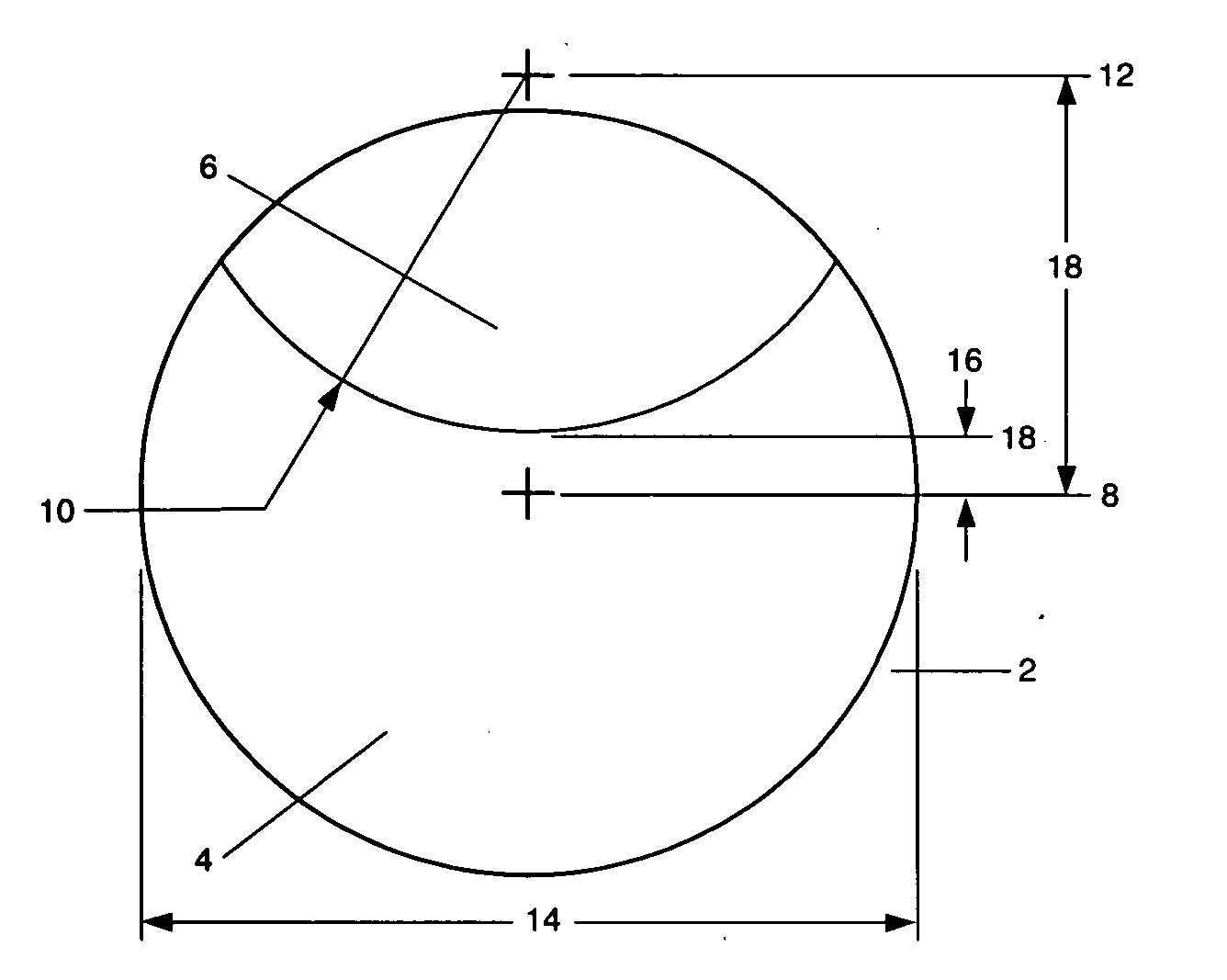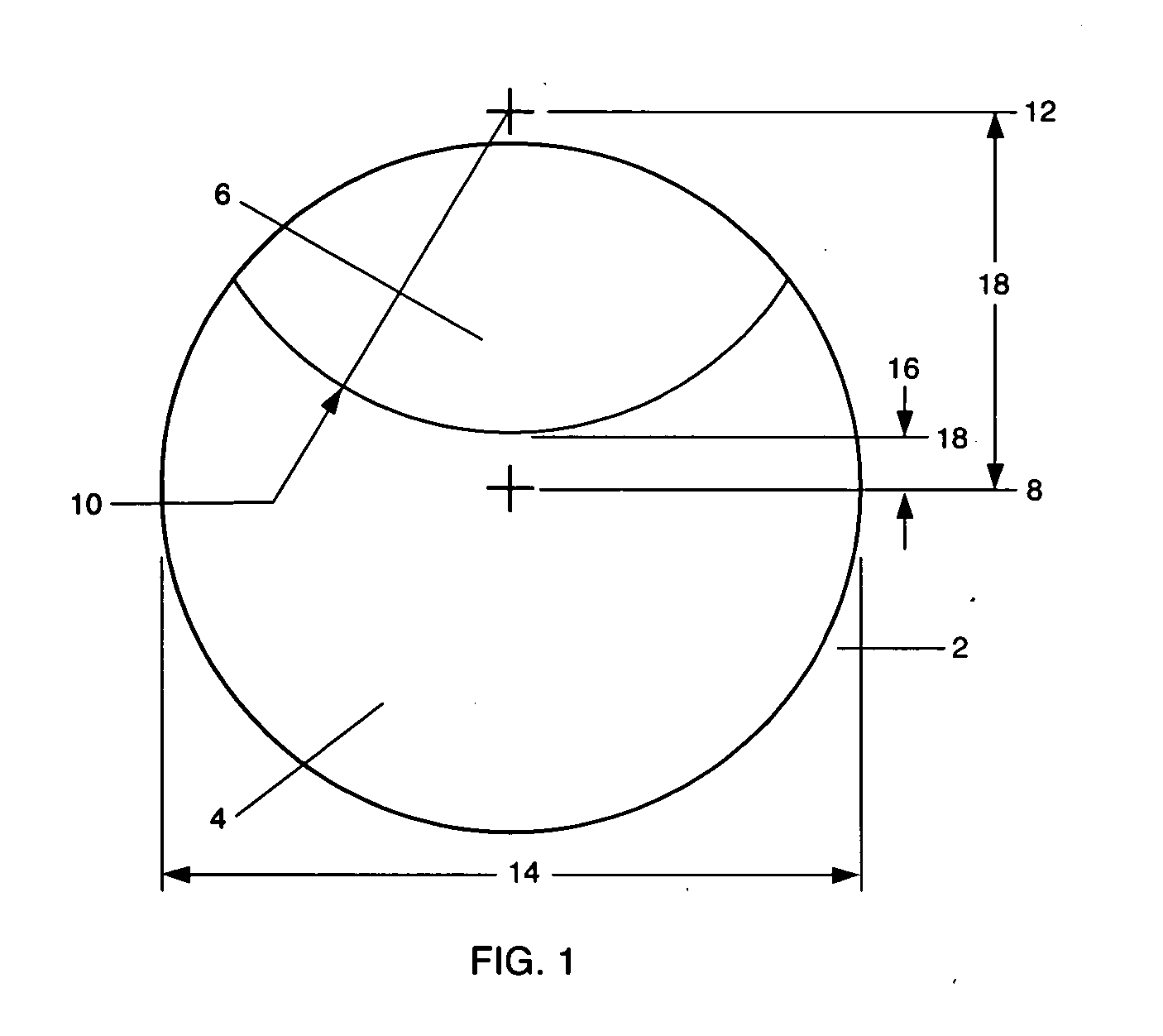Non-progressive multi-focal lens with large near/intermediate area
a multi-focal lens, near/intermediate area technology, applied in the field of ophthalmic lenses, can solve the problems of reducing the ability of the lens to focus on near images, reducing the accommodative power, and increasing the diameter of the lens, so as to reduce or eliminate any wasted lens area
- Summary
- Abstract
- Description
- Claims
- Application Information
AI Technical Summary
Benefits of technology
Problems solved by technology
Method used
Image
Examples
Embodiment Construction
[0022] A significant disadvantage to the use ophthalmic lenses is a difficulty in resting the eyes and making transitions from the intense near and intermediate viewing of the keyboard and screen to a more distant view. The difficulty is complicated where a worker has no need or little need of a prescription at one of the distinct distance areas of viewing. A very good lens design for prepresbyopes has therefore been found to be a lens that has the majority of the viewing area as a single vision near to intermediate vision correction / non-correction and a slice at the very top of the viewing area that contains the distance viewing prescription. The lens surfaces comprising the two prescriptions are positioned along a common centerline so as to reduce or eliminate the image jump that occurs in many bifocal lens designs when the view is shifted from the intermediate viewing portion to the distance viewing portion.
[0023] Reference to the Figures will assist in an appreciation of the de...
PUM
 Login to View More
Login to View More Abstract
Description
Claims
Application Information
 Login to View More
Login to View More - R&D
- Intellectual Property
- Life Sciences
- Materials
- Tech Scout
- Unparalleled Data Quality
- Higher Quality Content
- 60% Fewer Hallucinations
Browse by: Latest US Patents, China's latest patents, Technical Efficacy Thesaurus, Application Domain, Technology Topic, Popular Technical Reports.
© 2025 PatSnap. All rights reserved.Legal|Privacy policy|Modern Slavery Act Transparency Statement|Sitemap|About US| Contact US: help@patsnap.com



